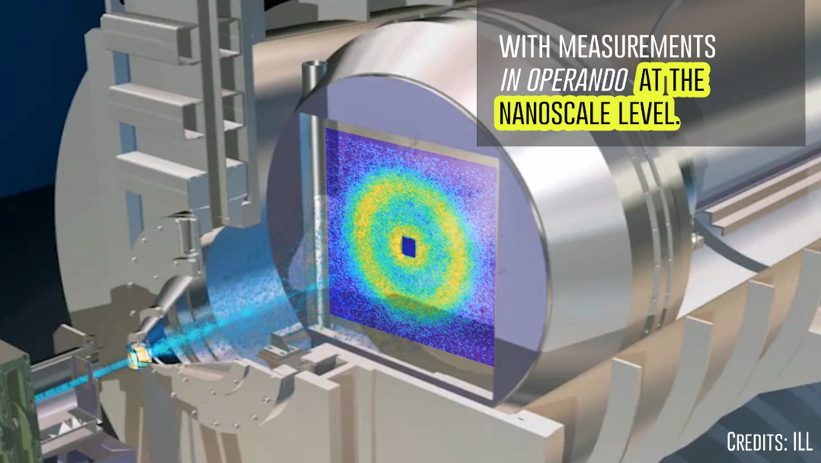With climate change and pollution taking a growing toll on the environment, researchers are working to develop sustainable energy solutions that will reduce our dependence on fossil fuels. Among the technologies for storing and releasing cleaner electrical energy, studies of batteries, fuel cells and electrolyzers stand out. Here's how neutron scattering is developing into a powerful tool in the development of these devices.
Fuel cells and electrolyzers have several components in common, one of which is the Polymer Electrolyte Membrane (PEM) – a semi-permeable material that acts as both an electrolyte (selectively conducting ions) and a separator (preventing undesirable side-reactions, electronic conduction and gas diffusion). PEMs are also used for ion-selective separation and considered key for new generations of "all-solid state" batteries. Critical issues that are currently being investigated address improvements in durability and performance efficiency combined with lowered production costs.
To this end, neutron scattering techniques, such as reflectivity, inelastic and quasi-elastic scattering, small and wide angle scattering, are enabling IRIG's scientists [
collaboration] to study the multi-scale structure and ion transport mechanisms within the membrane. Such information is invaluable for the design of advanced membranes formulation towards improved properties. Neutron tools are powerful to study the structure and dynamics of PEMs over a range of length- and time-scales, because of their high sensitivity to H-containing material, possibility to perform isotopic contrast based experiments, as well as high penetration through metallic containers and ceramics, therefore allowing to probe fuel cell devices under realistic operation conditions.
The intrinsic complexity of membranes represents a challenge for the prediction and optimization of their functions. However, the suite of neutron scattering techniques allow to disentangle the multiple complex processes occurring within the membrane as a function of key parameters,
e.g. hydration and temperature. In particular, the state and distribution of water can be quantified
in situ and correlated to fuel cell performance in actual operational conditions. This is critical, as membrane drying or water flooding are major causes of loss in performance and stability.
Thanks to new instrumentation, brighter neutron sources, and innovative
operando experiments on real electrochemical systems, neutron scattering techniques are emerging as a powerful research tool for the development of clean-energy devices.

Artist illustration for neutrons passing through fuel cell that give a SANS scattering image, instrument D22 at l'ILL.
Illustration taken from the
video "Neutrons an inevitable tool for your research on fuel cell".
© ILL
Collaboration: Department of Chemistry, University College London, United Kingdom ISIS; Neutron and Muon Source, United Kingdom; Laboratoire Léon Brillouin (CEA-CNRS), Université Paris-Saclay, France; CEA-Liten (CEA-UGA), France.